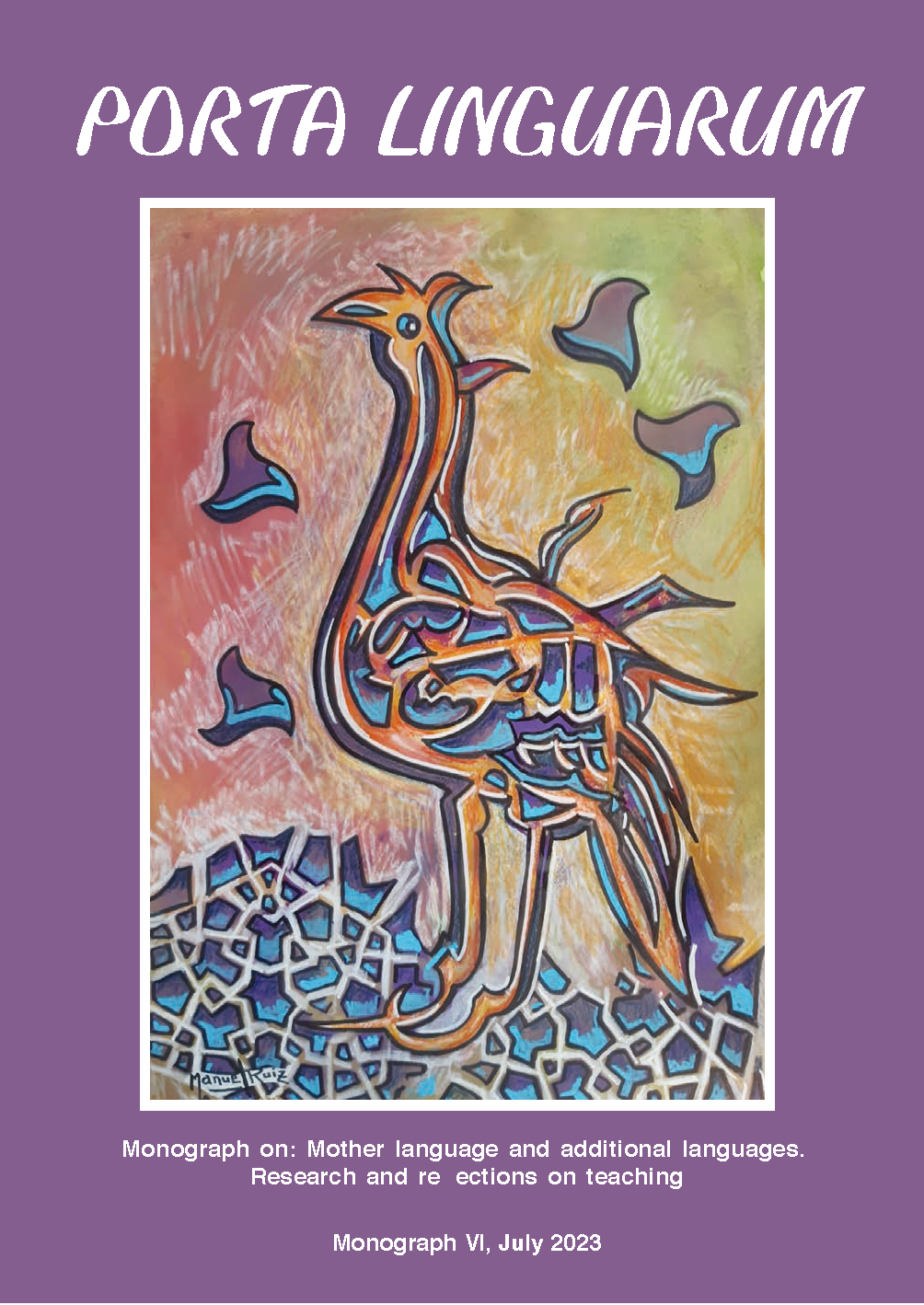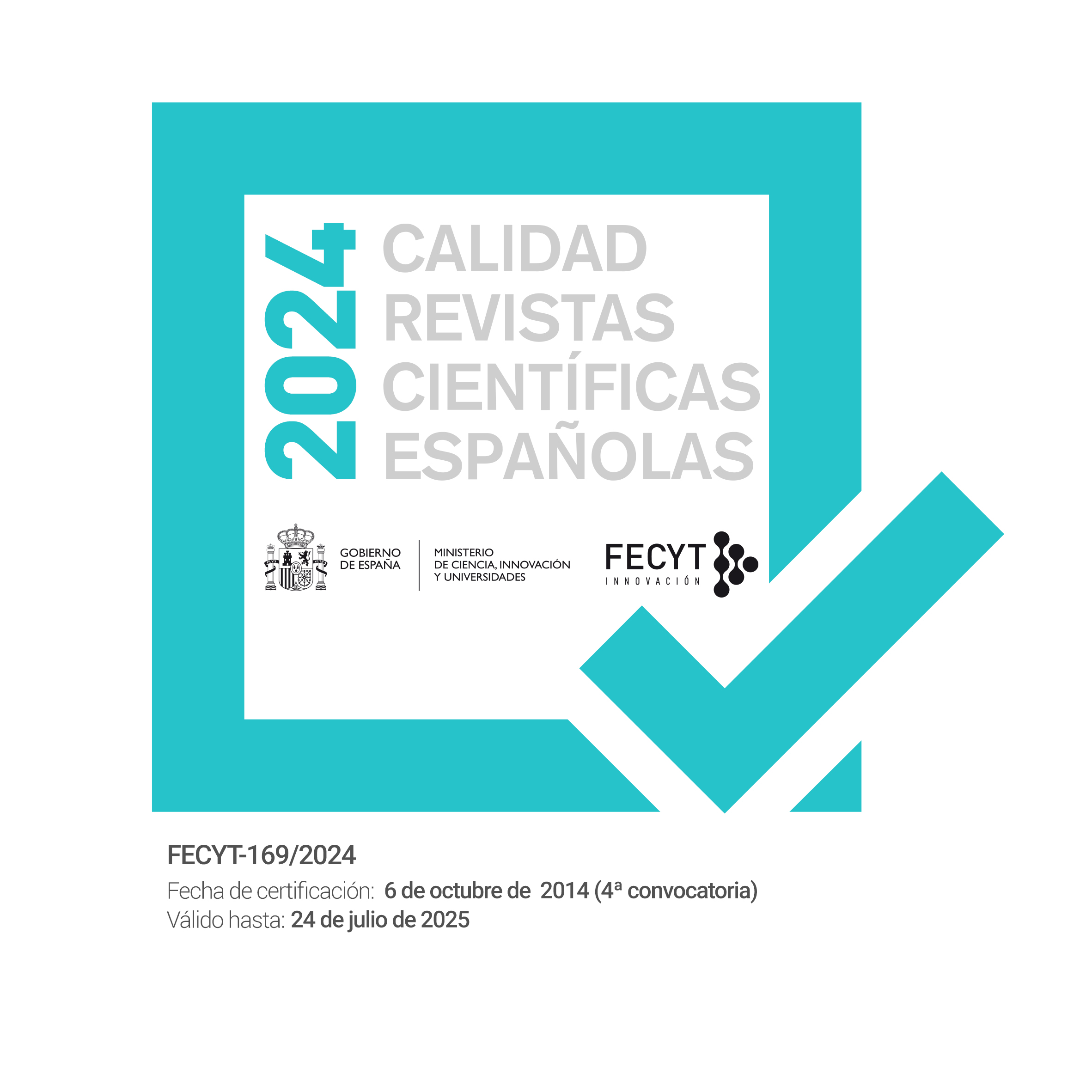Escribir en español como lengua primera y extranjera (L2/LE): cómo tomarle las medidas a la competencia discursiva a través de los géneros discursivos y los corpus
DOI:
https://doi.org/10.30827/portalin.viVI.28685Palabras clave:
competencia discursiva, escritura en L2, corpus de aprendices, narrativas en L2, género expositivo-argumentativo en L2Resumen
El objetivo de este trabajo es mostrar los resultados de una investigación acerca de cómo evoluciona la competencia discursiva en el aula de ELE en dos géneros textuales concretos, relato y exposición-explicación, en los niveles B1 y B2 del MCER, basándonos en el uso de corpus de L1 y L2.
Los datos proceden, en el relato, de un corpus de 208 producciones de 70 aprendices no nativos de B1 y de 55 nativos de dos estudios, uno longitudinal (mediante aprendizaje incidental), y otro transversal. En el género expositivo-argumentativo, estudio transversal, con 20 sujetos nativos y 15 no nativos (de B2), el trabajo centrado en el foco en la forma acerca los resultados a los de los nativos.
Las medidas de densidad léxica y de fluidez sitúan la diferencia en los aspectos cuantitativos para el relato en el nivel B1. Asimismo, se prueba que el uso de una metodología focalizadora en B2 contribuye a mejorar e incluso superar los resultados de los nativos.
A nivel didáctico, se observa la utilidad del trabajo textual-funcional de los géneros en el aula y del papel positivo del uso de corpus para proporcionar modelos realistas como input e instrumento de evaluación.
Descargas
Citas
Agustín Llach, M. P. (2011). Lexical Errors and Accuracy in Foreign Language Writing.. Multilingual Matters.
Baerlocher, C. (2013). Los errores léxicos en textos escritos en español por alumnos universitarios brasileños en formación como profesores de español lengua extranjera. [Tesis doctoral, Universidad de Barcelona].
Bustos, J. M. (1996). La construcción de textos en español. Universidad de Salamanca.
Comajoan, L. y Pérez Saldanya, M. (2018). Los tiempos verbales del español. Descripción del sistema y su adquisición en segundas lenguas. Octaedro.
Consejo de Europa (2018). Common European Framework of Reference for Languages: Learning, Teaching, Assessment. Companion volume with new descriptors. Estrasburgo.
De Haan, P. and K. van Esch (2005). The development of writing in English and Spanish as foreign languages, Assessing Writing, 10, 100-116.
De Santiago, J. y Díaz, L. (2020) Lingüística textual y enseñanza de español L2/LE. Routledge. https://doi.org/10.4324/9781315101828
Díaz, L. y Lucha, R. (2020) Textos expositivos-explicativos en español L2/LE, Javier de Santiago y Lourdes Díaz (Eds.). https://doi.org/10.4324/9781315101828
Dugast, D. (1978). Sur quoi se fonde la notion d´étendue théorique du vocabulaire?, Le français modern, 1, 25-32.
Dugast, D. (1979). Vocabulaire et stylistique. 1. Théâtre et dialogue, Slatkine.
Dugast, D. (1980). La statistique lexicale, Slatkine.
Ellis, R. (1994). The Study of Second Language Acquisition. Oxford University Press.
Ellis, R. (2001). Form-Focused Instruction and Second Language Learning. Blackwell.
Ellis, R. (2002). Does Form-Focused Instruction affect the acquisition of implicit Knowledge, SSLA, 24, 223-236.
Halliday, M. A. K. (1973, 19792). Explorations in the Functions of Language. Edward Arnold.
Halliday, M. A. K. (1989). Spoken and Written Language. Oxford. Oxford University Press.
Halliday, M. A. K. y Hasan, R. (1985, 19892). Language, context, and text: aspects of language in a social-semiotic perspective. Oxford University Press.
De Haan, P. y K. van Esch (2005), “The development of writing in English and Spanish as foreign languages”, Assessing Writing, 10, pp. 100-116.
Harley, T. A. (1984). A critique of top-down independent levels models of speech production: Evidence from non-plan-internal speech production. Cognitive Science, 8, 191–219.
Hyland, K. (2002). Teaching and Researching Writing. Pearson Education.
Instituto Cervantes. (2006). Plan Curricular del Instituto Cervantes. Niveles de referencia. Biblioteca Nueva.
Jarvis, S. (2002). Short texts, best-fitting curves and new measures of lexical diversity, Language Testing, 19(1), 57–84.
Krashen, S. D. (1977). El modelo del monitor y la actuación de los adultos en L2. En J. Muñoz Liceras (ed.), La adquisición de las lenguas extranjeras. Visor.
Krashen, S. D. (1985). The Input Hypothesis: Issues and Implications. Nueva. Longman.
Laufer, B. (2003). The influence of L2 on L1 collocational knowledge and on L1 lexical diversity in free written expression, V. Cook (ed.) Effects of the second language on the first, Multilingual Matters, 19-31.
Long, Michael (1991). Focus on form: a design feature in language teaching methodology. En K. de Bot; Ginsberg, R.; Kramsch, C. (eds.). Foreign language research in cross-cultural perspective. John Benjamins, 39–52.
Lucha, R. M. (2006). ¿Por qué enseñar a escribir utilizando técnicas de “focus on form”? MarcoELE,2. http://www.marcoele.com/num/2/escriturafocoenlaforma.php
Lucha, R. M. and Díaz, L. (2012). Escribo con acento en español. ¿Eso importa? ¿Puedo obtener feedback automáticamente? MarcoELE, Monografías núm.15. Estudios sobre aprendizaje y adquisición de lenguas y sus contextos.
Lucha, R. M. (2016). El efecto de la tarea en producciones escritas analizadas con ordenador. [PhD dissertation, Universitat de Barcelona].
Lucha, R. M. y Díaz, L. (2016). ¿Progreso en mis textos escritos? Análisis de la riqueza y densidad léxica en producciones escritas mediante software informático. E-Aesla, 2, 1-10.
Lucha, R. M. y Díaz, L. (2017). Tipos textuales expositivos, correos electrónicos y enseñanza de géneros textuales en ELE. MarcoELE, 25. https://marcoele.com/tipos-textuales-expositivos/
Mackey, A. and Philp, J. (1998). Conversational interaction and second language development: recasts, responses, and red herrings? Modern Language Journal, 82(3), 338-356. https://doi.org/10.1111/j.1540-4781.1998.tb01211.x
Mackey, A. (1999). Input, interaction and second language development: an empirical study of question formation in ESL. Studies in Second Language Acquisition, 21(4), 557-587. http://journals.cambridge.org/action/displayJournal?jid=SLA
Martin, J. R. (1992). English Text: System and Structure. Benjamins. https://doi.org/10.1075/z.59
Martin, J. R. and Rose, D. (2003, 2007). Working with Discourse: Meaning Beyond the Clause (2nd Revised Edition). Continuum.
Martin, J. R. and Rose, D. (2008). Genre Relations: Mapping Culture. Equinox
Martínez Arbelaiz, M. A. (2004). Índices de progreso en la producción escrita de estudiantes de español en situación de inmersión, RAEL. Revista Electrónica de Lingüística Aplicada, (3), 115-145.
Pallotti, G. (2015). A simple view of linguistic complexity. Second Language Research, 31(1), 117-134.
Paltridge, B. (1997). Genre, frames and writing in research settings. John Benjamins.
Paltridge, B., (2006). Making sense of Discourse Analysis. Merino Litographs.
Read, J. (2000). Assessing vocabulary. Cambridge University Press.
Robinson, P. (1994a). Implicit knowledge, second language learning and syllabus construction. TESOL Quarterly, 28, 160–166.
Salaberry, R. H. (1998) The role of input and output practices in Second Language Acquisition. The Canadian Modern Language Review, 53(2), 422-451. Doi: https://doi.org/10.3138/cmlr.53.2.422
Sanz, C. y Morgan-Short, K. (2004). Positive evidence versus explicit rule presentation and explicit negative feedback: a computer – assited study. Language Learning, 54(1), 35-78.
Teijeira Rodríguez, M. C., van Esch, K. y De Haan, P. (2005). La coherencia y la cohesión en textos escritos por estudiantes neerlandeses de español como LE. Estudios de Lingüística Aplicada, 41, 67-100.
Van Esch, K., P. De Haan y M. Nas (2004). El desarrollo de la escritura en inglés y español como lenguas extranjeras. Estudios de Lingüística Aplicada, 39, 53-79.
Van Esch, K., De Haan, P., Frissen, L., González Santero, I. y De la Torre Miranda, A. (2006). Evolución en la competencia escrita de estudiantes de español como lengua extranjera. Estudios de Lingüística Aplicada, 43, 55-76.
Van Patten, B. (1990). Attending to Form and Content in the Input: An Experiment in Consciousness. Studies in Second Language Acquisition, 12(3), 287-301. doi:10.1017/S0272263100009177
Van Patten, B. and Cadierno, C. (1993). Explicit instruction and input processing. Studies in Second Language Acquisition, 15, 225-241.
Van Patten, B. and Sanz, C. (1995) From input to output: Processing instruction and communicative tasks. En F. Eckman; J. Mileham; R. Rutkowki; D. Highland y P. W. Lee (eds.). Second Language Acquisition: Theory and Pedagogy.Mahwa. Lawrence Erlbaum Ass., 169-186.
Vermeer, A. (2000). Coming to grips with lexical richness in spontaneous speech data. Language Testing, 17, 65-83.
Wolfe-Quintero, K., Inagaki, S. y H. Y., Kim. (1998). Second language development in writing: Measures of fluency, accuracy, and complexity (Report No. 17). University of Hawaii. Second Language Teaching and Curriculum Center.



















